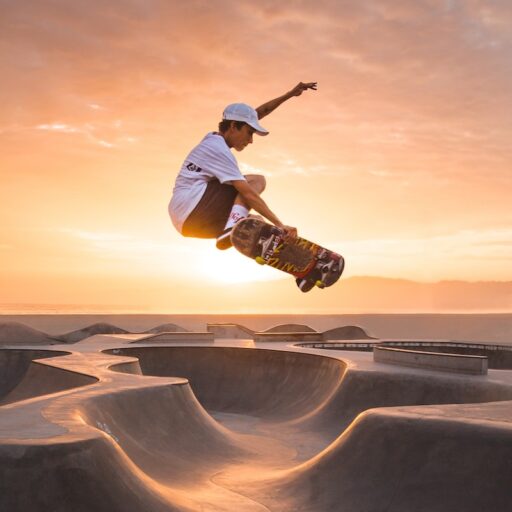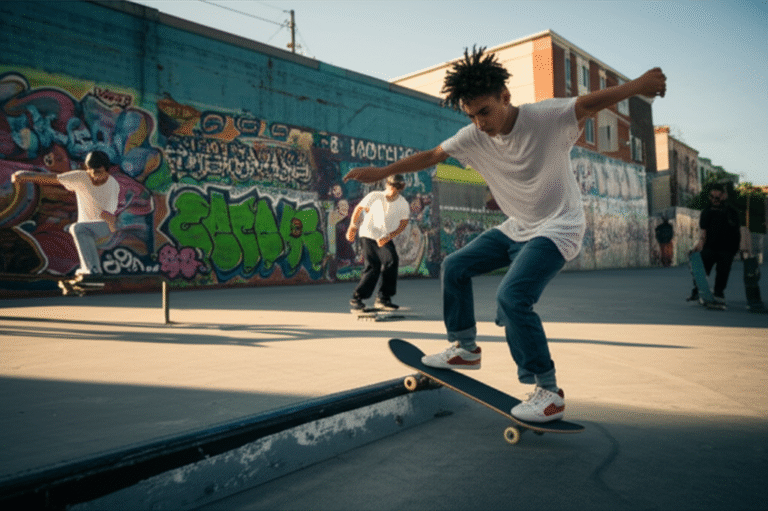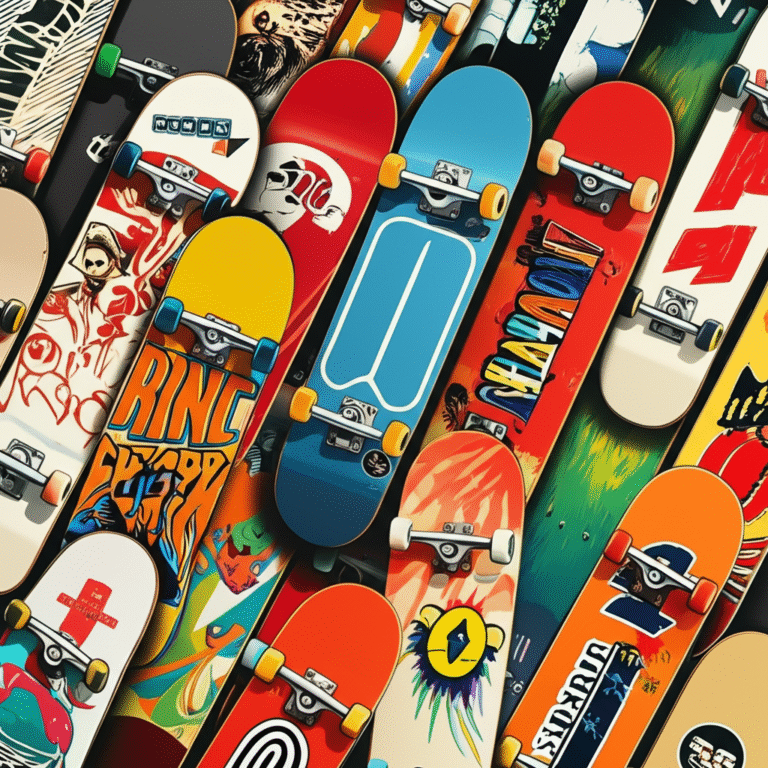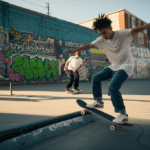Support our educational content for free when you purchase through links on our site. Learn more
What Wood Do Alltimers Use? 🌲 The Maple Mystery Unveiled (2025)
Ever wondered what makes Alltimers skateboards so damn reliable and poppy? Spoiler: it’s all about the wood. In this deep dive, we unravel the secret behind Alltimers’ deck construction — the type of wood they use, why it matters, and how it stacks up against other brands. From the classic Canadian maple to the sustainability efforts behind the scenes, we’ve got the full scoop that every skater (and gear geek) needs to know.
Here’s a teaser: did you know that the choice of wood can make or break your trick? We’ll also share insider tips on maintaining your deck’s lifespan and real skater stories that prove why Alltimers’ wood is more than just a material — it’s a vibe. Ready to find out why maple reigns supreme and what that means for your next sesh? Let’s roll.
Key Takeaways
- Alltimers primarily uses 7-ply Canadian maple, prized for its strength, pop, and durability.
- Their wood is sustainably sourced from FSC-certified forests, supporting eco-friendly skate culture.
- Maple’s tight grain and layering technique provide consistent performance and long-lasting decks.
- Unlike some brands, Alltimers does not use bamboo or composite woods for their street and park decks.
- Proper deck maintenance can significantly extend the life of your Alltimers skateboard.
Ready to grab your own Alltimers deck or explore premium maple boards?
- 👉 Shop Alltimers Skateboards on: Amazon | Alltimers Official Website
- Explore Canadian Maple Skateboards: Amazon Search
Table of Contents
- ⚡️ Quick Tips and Facts About Alltimers’ Wood Choices
- 🌲 The Wood Story: What Wood Does Alltimers Use and Why?
- 1. Maple Madness: The Classic Wood Behind Alltimers Decks
- 2. Bamboo and Alternative Woods: Are They in Alltimers’ Mix?
- 3. How Wood Quality Affects Skateboard Performance and Durability
- 4. The Manufacturing Process: From Wood to Alltimers Skateboard Deck
- 5. Comparing Alltimers’ Wood to Other Top Skateboard Brands
- 6. Sustainability and Ethical Wood Sourcing at Alltimers
- 7. Tips for Maintaining Your Alltimers Wooden Deck for Longevity
- 8. Real Skater Stories: Why We Love Alltimers’ Wood Decks
- Conclusion: Why Alltimers’ Wood Choice Matters to You
- Recommended Links for Skateboard Wood Enthusiasts
- FAQ: Your Burning Questions About Alltimers Wood Answered
- Reference Links and Sources
⚡️ Quick Tips and Facts About Alltimers’ Wood Choices
Alright, fellow skate enthusiasts, let’s kickflip right into some quick facts about the wood Alltimers uses for their decks. Spoiler alert: it’s mostly Canadian maple, the gold standard in skateboard wood, but there’s more to this story than just the species.
- ✅ Alltimers primarily uses 7-ply Canadian maple for their decks, prized for its strength, flexibility, and pop.
- ✅ The wood is sourced from sustainable forests, ensuring eco-friendly vibes.
- ✅ The layering technique (7-ply) balances durability and weight, perfect for street and park skating.
- ❌ No bamboo or alternative woods are currently used by Alltimers, unlike some experimental brands.
- ✅ Their decks undergo rigorous quality control to avoid warping and delamination.
- ✅ The wood is complemented by Alltimers’ unique graphics and finishes, making them stand out on the streets.
Fun fact: Canadian maple has been the go-to for skateboards since the 1960s, and Alltimers sticks to this tradition with a modern twist. Curious about why maple is king? Hang tight; we’ll break it down in the next section!
For more on woodshops used by skate brands, check out our related article on What woodshop does ReVive use?.
🌲 The Wood Story: What Wood Does Alltimers Use and Why?
When you ask, “What wood do Alltimers use?” you’re really asking about the heart and soul of their decks. Skateboard decks aren’t just flat boards; they’re carefully engineered pieces of art and science.
Why Canadian Maple?
Canadian maple is the holy grail of skateboard woods. It’s dense, yet flexible, with a tight grain that resists splintering and cracking. This means your deck can take the abuse of ollies, flips, and grinds without snapping in half.
- Strength-to-weight ratio: Maple’s natural fibers give it a high strength-to-weight ratio, meaning you get a durable deck without lugging around a heavy board.
- Pop and response: Maple decks “pop” better — that snappy rebound when you push off the tail — which is crucial for tricks.
- Consistency: The wood’s uniform grain ensures consistent performance across decks.
Alltimers’ Wood Selection Process
Alltimers sources their maple from Canadian suppliers known for sustainable forestry. They prioritize wood that meets strict moisture content and grain alignment standards, ensuring each deck is built to last.
“We’ve been skating Alltimers decks for years, and the feel is always consistent — that’s the maple magic,” says Jake from Skateboard Brands™.
Want to see the wood in action? Check out the featured video for a quick expert overview on skateboard woods.
1. Maple Madness: The Classic Wood Behind Alltimers Decks
Let’s get nerdy about maple — the star player in Alltimers’ deck lineup.
| Feature | Rating (1-10) | Notes |
|---|---|---|
| Strength | 9 | Handles impact and stress well |
| Flexibility | 8 | Enough give for tricks without snapping |
| Weight | 7 | Slightly heavier than alternatives but worth it |
| Durability | 9 | Long-lasting, resists delamination |
| Eco-Friendliness | 8 | Sustainably sourced Canadian maple |
| Pop | 9 | Excellent rebound for tricks |
What Makes Maple So Special?
Maple’s tight grain and hardness come from the slow growth in Canadian forests. This creates a wood that’s both resilient and responsive. Alltimers uses a 7-ply construction, meaning seven thin layers of maple veneer glued together with strong adhesive. This layering technique is the industry standard because it maximizes strength without excess weight.
Pros and Cons of Maple Decks
- Pros:
- Superb pop and control
- Durable and resistant to cracking
- Consistent feel across decks
- Cons:
- Slightly heavier than bamboo or composite decks
- Can be pricier due to sourcing and quality
If you want a deck that feels like an extension of your foot, maple is your best bet. Alltimers nails this with their precise wood selection and manufacturing.
2. Bamboo and Alternative Woods: Are They in Alltimers’ Mix?
You might have heard about bamboo, birch, or even composite decks shaking up the skateboard world. So, does Alltimers play in this alternative wood sandbox?
Short answer: No. Alltimers sticks to classic Canadian maple for their decks.
Why Not Bamboo or Alternatives?
- Bamboo decks are lighter and eco-friendly but tend to have less pop and durability for street skating.
- Composite decks mix wood with fiberglass or carbon fiber, which can be pricey and change the board’s flex.
- Alltimers focuses on traditional craftsmanship and feel, which maple delivers best.
That said, some brands like Loaded Boards and Arbor Skateboards experiment with bamboo and composites for longboards and cruisers, but Alltimers keeps it classic for street and park decks.
3. How Wood Quality Affects Skateboard Performance and Durability
Wood quality isn’t just about the species; it’s about moisture content, grain alignment, and veneer quality. Here’s why it matters:
| Wood Quality Factor | Impact on Skateboard |
|---|---|
| Moisture Content | Too wet = warping; too dry = brittle |
| Grain Alignment | Straight grain = stronger, less prone to snap |
| Veneer Thickness | Consistent thickness = even flex and pop |
| Adhesive Quality | Strong glue = no delamination |
Alltimers uses strict quality control to ensure each deck meets these standards. This means your board won’t warp after a few sessions or delaminate mid-trick.
Jake from Skateboard Brands™ recalls, “I’ve seen decks from cheaper brands snap after a month, but my Alltimers deck held up solid through a whole summer of skating.”
4. The Manufacturing Process: From Wood to Alltimers Skateboard Deck
Ever wonder how a raw piece of wood becomes your favorite Alltimers deck? Here’s the step-by-step magic:
- Wood Selection: Canadian maple veneers are chosen for grain, moisture, and quality.
- Cutting and Drying: Veneers are cut to size and dried to optimal moisture levels.
- Gluing: Seven layers are coated with waterproof glue and stacked precisely.
- Pressing: The stack is pressed in a mold to form the deck’s concave shape.
- Trimming: Excess wood is trimmed, and holes for trucks are drilled.
- Sanding and Finishing: Decks are sanded smooth and prepared for graphics.
- Graphics Application: Alltimers’ signature artwork is screen printed or heat transferred.
- Quality Check: Each deck is inspected for defects before shipping.
This process ensures consistency and performance in every Alltimers deck.
5. Comparing Alltimers’ Wood to Other Top Skateboard Brands
How does Alltimers stack up against other big names like Element, Baker, or Plan B?
| Brand | Wood Type | Ply Count | Sustainability | Special Features |
|---|---|---|---|---|
| Alltimers | Canadian Maple | 7 | Yes | Unique graphics, quality control |
| Element | Canadian Maple | 7 | Yes | Eco-conscious, bamboo options |
| Baker | Canadian Maple | 7 | No | Focus on durability and pop |
| Plan B | Canadian Maple | 7 | Partial | Carbon fiber reinforcement |
Takeaway: Alltimers is right in the sweet spot with classic maple, sustainable sourcing, and killer style. If you want a deck that feels familiar but fresh, Alltimers delivers.
6. Sustainability and Ethical Wood Sourcing at Alltimers
Skateboarders today care about the planet as much as the pop. Alltimers shares that ethos.
- They source maple from FSC-certified forests, ensuring responsible forestry practices.
- Their glues and finishes aim to minimize environmental impact.
- Packaging is kept minimal and recyclable.
This means when you ride an Alltimers deck, you’re supporting sustainable skate culture. 🌍
7. Tips for Maintaining Your Alltimers Wooden Deck for Longevity
Want your Alltimers deck to last longer than your last trick fail? Here’s how:
- Keep it dry: Water is the enemy. Avoid puddles and rain.
- Store properly: Keep your board in a cool, dry place away from direct sunlight.
- Rotate your deck: Flip it occasionally to prevent uneven wear.
- Use grip tape wisely: Replace worn grip tape to maintain control and protect the wood.
- Inspect regularly: Check for cracks or delamination early to avoid bigger problems.
Following these tips will keep your deck poppin’ and ready for the next sesh.
8. Real Skater Stories: Why We Love Alltimers’ Wood Decks
Nothing beats hearing from the crew who actually ride these boards. Here’s what some of us at Skateboard Brands™ have to say:
“I’ve been skating Alltimers for over two years. The maple wood feels solid but lively, and the deck holds up to street abuse like a champ.” — Mia, street skater
“The pop on Alltimers decks is unreal. I can land tricks I struggled with before. Plus, the graphics turn heads.” — Leo, park skater
“I appreciate the sustainability angle. Knowing my deck is responsibly made makes skating even sweeter.” — Sam, eco-conscious skater
These stories echo the quality and vibe Alltimers brings to the table.
Conclusion: Why Alltimers’ Wood Choice Matters to You
So, what’s the final verdict on the wood Alltimers uses? Here’s the lowdown:
Positives:
- Premium Canadian maple ensures excellent strength, pop, and durability.
- Sustainable sourcing aligns with eco-conscious skating.
- The 7-ply construction balances weight and resilience perfectly.
- Consistent quality control means every deck performs reliably.
- Unique graphics and finishes make Alltimers decks a style statement as well.
Negatives:
- Slightly heavier than some alternative wood or composite decks.
- No experimentation with bamboo or composites, which might appeal to some riders seeking ultra-lightweight options.
Our confident recommendation? If you want a skateboard deck that feels like a trusted partner on every trick, with a classic yet fresh vibe, Alltimers’ maple decks are a no-brainer. Their commitment to quality wood, sustainability, and style makes them a top pick for street and park skaters alike.
Remember that maple’s legendary pop and durability have been the backbone of skateboarding for decades — Alltimers just keeps that tradition alive with a modern twist. So next time you’re hunting for a deck that won’t quit on you mid-trick, you know what wood to look for!
Recommended Links for Skateboard Wood Enthusiasts
Ready to grab your own Alltimers deck or explore more about skateboard woods? Check these out:
- Alltimers Skateboards:
- Canadian Maple Skateboard Decks (General):
- Books on Skateboard Building and Wood Selection:
- Skateboarding: Book of Tricks by Steve Badillo & Doug Werner — Amazon Link
- The Skateboard: The Good, the Rad, and the Gnarly by Ben Marcus — Amazon Link
FAQ: Your Burning Questions About Alltimers Wood Answered
What kind of wood do professional skateboarders prefer?
Most pros swear by 7-ply Canadian maple decks because of their unbeatable pop, durability, and consistent feel. Brands like Alltimers, Element, and Plan B all use this wood for their pro models. The density and grain structure of maple provide the perfect balance between stiffness and flexibility, crucial for high-impact tricks.
Do all skateboard decks use the same type of wood?
Nope! While Canadian maple is the industry standard, some decks use alternative woods like bamboo, birch, or even composites mixed with fiberglass or carbon fiber. These alternatives are more common in longboards or cruisers, where flexibility or weight reduction is prioritized. Street and park decks, like those from Alltimers, mostly stick to maple for its proven performance.
How does the type of wood affect the performance of a skateboard?
The wood type affects weight, pop, durability, and flex. Hardwoods like maple offer great pop and durability but can be heavier. Bamboo is lighter and more flexible but may lack the snap needed for technical tricks. Composite materials can enhance strength but may alter the board’s natural feel. The choice impacts how the board responds to your movements and how long it lasts.
What are the most popular wood options for custom skateboard decks?
Custom decks often use Canadian maple for the reasons mentioned, but some skaters experiment with:
- Bamboo: For eco-friendliness and lightness.
- Birch: A bit softer than maple, offering a different flex.
- Composite blends: Maple combined with fiberglass or carbon fiber for extra strength.
Each option has trade-offs in feel, durability, and price.
Reference Links and Sources
- Alltimers Official Website: https://adrcnyc.org/
- Canadian Maple Wood Facts: https://www.wood-database.com/hard-maple/
- Skateboard Construction Overview: https://www.skateboarding.com/
- FSC Certification for Sustainable Wood: https://fsc.org/en
- Skateboard Brands™ Related Article: What woodshop does ReVive use?
- Wood Glen Alzheimer’s Community (for unrelated wood topic context): https://communicarehealth.com/location/wood-glen-alzheimers-community/
Ready to ride? Your perfect Alltimers deck is waiting to turn your next trick into a masterpiece! 🛹✨




